Don't wanna be here? Send us removal request.
Photo



In working with Lee County Parks and Recreation and Conservation 20/20, I was able to connect to my community through a natural place and develop my sense of place in the challenge of waste management in our overly wasteful society. For our service-learning project, we cleaned the outskirts of Deep Lagoon Preserve as well as the edges of the canal that ran along two parcels of the preserve. We also walked along the side of McGregor Boulevard and Willems Drive to clean up litter from the overpass and surrounding community. We chose this project because we wanted to make a difference for our communities and after reading and being exposed to how wasteful humans can be not only in this class but in many others, we decided that this was the type of action we wanted to pursue.
The goal of Conservation 20/20 is to preserve the natural qualities of land managed by Lee county and create a healthy environment for not only the wildlife in the area but the surrounding communities as well (Land Management). Their mission ties into sense of place as well as environmental education. By working with this organization, we were able to understand our sense of place and now know that we need to advocate for positive ways of reducing waste as well as managing it properly. It also ties into environmental education because we learned so much about the natural environment as we did our cleanup. It is the job of the Conservation 20/20 team to educate people about the natural areas that surround us to get people to care not only about the land but about their habits in managing their own waste.
This project connected with what we learned in colloquium because it deals with the attitude in which people think about their waste. Most people have the mindset that they can keep using single-use plastics and other non-sustainable items and that they have no negative impact on the environment simply because they do not see where their waste goes. This mindset is part of the reason that so many beautiful natural lands as well as our wildlife are in danger. In chapter 14 about waste it states, “Maybe the right question is, ‘how can we stop producing so much waste in the first place?” (Robertson 288). This proves the point that our society thinks on a low-level regarding waste. There is also a huge rebuttal to this question in terms of how recycling is long-term solution. It is so aggravating to hear this argument as they do not know all the facts and simply do not want to educate themselves. After all, regarding recycling there are only six things you can truly recycle: metal, paper or cardboard, glass, plastics, batteries, and electronics (Select an Area). Even so, two of these require very intense and specific instructions to recycle properly. If more people knew what could be properly recycled and what could not, I believe that they would change their attitude towards waste management and Lee County Parks and Recreation along with Conservation 20/20 are striving to educate volunteers and the community about this topic.
Works Cited
“Land Management.” Lee County Southwest Florida, www.leegov.com/conservation2020/landmanagement.
Robertson, Margaret. Sustainability Principles and Practice. Routledge, Taylor & Francis Group, 2017.
“Select an Area.” What Can I Recycle | ThinkGreen | Waste Management, www.wm.com/thinkgreen/what-can-i-recycle.jsp.
Photos taken at Deep Lagoon Preserve during our service project.
0 notes
Photo



Going to ECHO for our field trip this past week was awesome. They have been so innovative in so many ways. I love that they are a global organization that is striving to provide people with sustainable means of growing their own food. I found their methods and technology to be way out of the box but so efficient. The propagation of their Barbados cherry trees was really cool and something I would like to try at home with my own Barbados cherry. They essentially wound a branch all the way around and wrap moss, then a wet layer of paper towel, plastic wrap, and then finally tin foil around the wound. This allows the plant to get nutrients solely from the organic material (the moss) and to essentially create its own root system. This is even cooler given the fact that often branches are chosen by their ability to grow fruit. This shaves a few years off of the cycle in which often you would have to wait for the tree to mature.
Also I love the fact that they use chicken and pig tractors on the farm. When I had my chickens for 4-H, we had a chicken tractor so that they could graze regularly. I love that ECHO is striving to use these animals and their natural instincts to help farmers clear their land in a sustainable and clean way.
Another piece of technology I found incredibly useful and innovative was the Chapin Drip Irrigation Bucket. It is simple to do and only uses drip tape and a 5 gallon bucket. I love how simple this really is and how it uses the natural force of gravity as a means to get the job of watering your plants done.
All Photos taken at ECHO Farms
0 notes
Photo
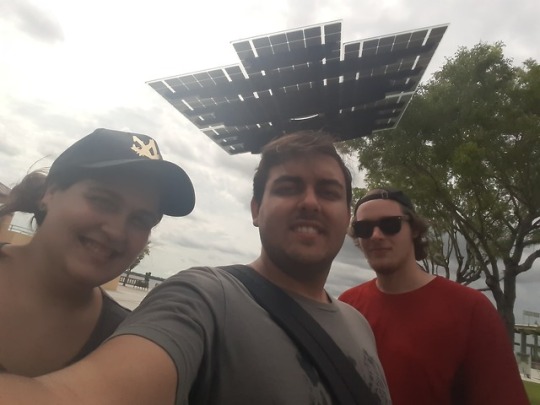

Our field trip to Downtown Fort Myers was a bit of a let down in my opinion. Being a Fort Myers native, I have been to Downtown Fort Myers a ton growing up which made this trip truly uninteresting. I have noted the development of Downtown and the increasing population of homeless individuals and honestly, I don’t enjoy going there really. The only good qualities it has are the festivals it tends to hold every few weeks though even those are subject to not being that great as there have been shootings and an increase in crime.
Aside from recognizing the small number of solar panels in Centennial Park, nothing new really stood out to me on this trip. Downtown Fort Myers is mostly cement with little sustainability. There are almost no green areas and the biodiversity is limited to squirrels, pigeons, and some water fowl near the Caloosahatchee river. Unless you like to drink or dine-out, Downtown Fort Myers just isn’t a very fun place to be.
Pictures: Downtown Fort Myers taken by us
0 notes
Photo


Hearing Jessica Ryals talk about food systems on Wednesday was a real treat for me. It is always a pleasure to learn from another member of IFAS and their take on our community and various topics of human systems. Learning about food systems was really interesting because it allowed us as a class to really break down each step of the process and learn a little bit about it. Jessica made a point to talk about the ways in which Southwest Florida is trying to make a difference in the different parts of the food system such as production and waste. I also found it really intriguing to see what the class thought of each step along the way. It was nice seeing that the class as a whole knew quite a bit about where our food comes from and how it is distributed, processed, influenced by politics, etc.
I think having a member of IFAS is a great way for people to learn about Florida specific problems and ways of living and I thought it was really cool that Collier County IFAS Extension was able to send someone out to educate us. I look forward to learning more through my Extension program in Lee county and I hope others will look to IFAS for further educational programs.
Pictures:
IFAS Logo: https://pdec.ifas.ufl.edu/workload/
Food System Infographic: http://www.merid.org/climatechangefoodsystems.aspx
0 notes
Photo
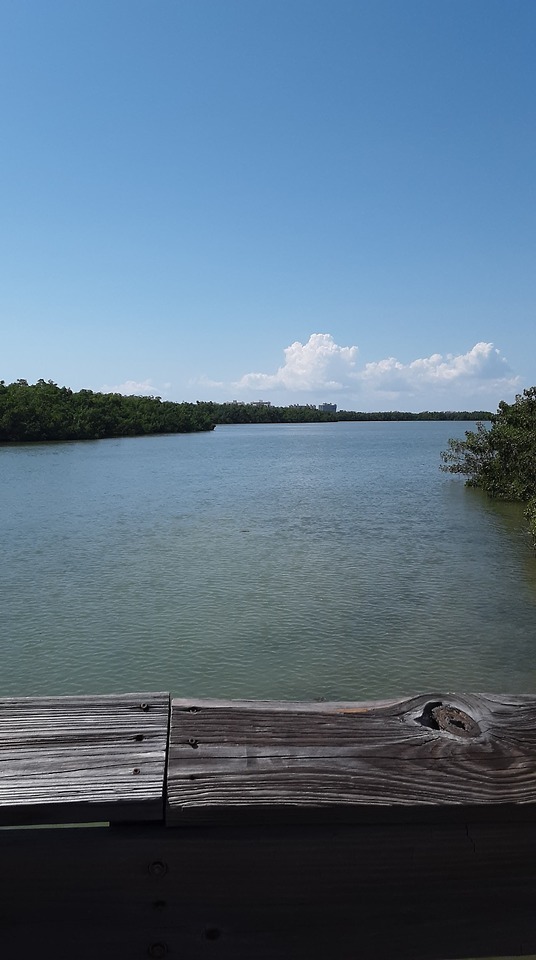

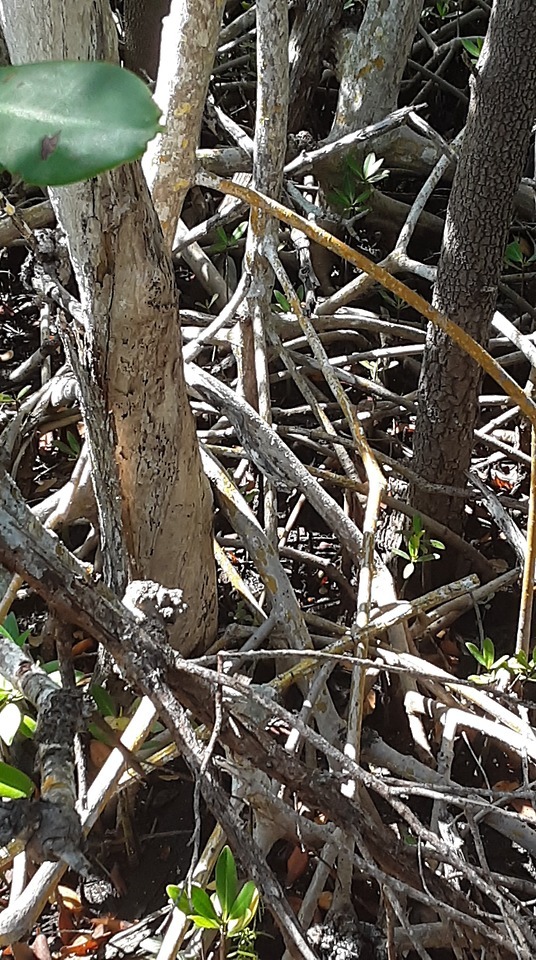

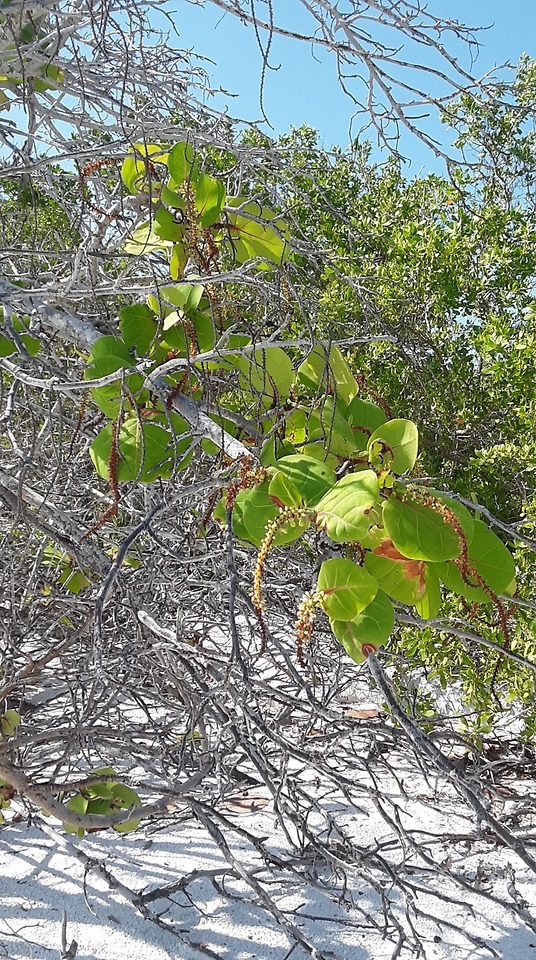
Our trip to Lover’s Key State Park was fun and informative but super hot. In high school, I took a marine biology course and a lot of it has stuck with me to this day but I did learn a few new things on this trip. For instance, I did not know that mangroves dealt with salt in various ways such as the sacrificial leaf or excreting the salt on their leaves. I find the ways that these plants have adapted to be very fascinating. Also I love that Hannah keeps telling us ways in which our locals are living off the land. Using Sea grapes for Kombucha and jellies and jams is amazing. It makes me wonder if I would like sea grapes and whether I should try something of this nature.
Overall, this has been a fun field trip though it seemed rather short compared to our last trip. I think exploring the park more would have been far more interesting especially because we didn’t really get the chance given that we had to meet at the gazebo about twenty minutes after we finally reached the beach.
I am hoping that our next field trips will be a lot more fun and informative. Especially because I feel as if I walked away from this field trip not really knowing too much more than I already did when I got there.
Pictures: All taken from our trip to Lover’s Key (in order: Lover’s key, mangrove sacrificial leaf, aerated mangrove roots, sea grapes, and sea grape vines)
0 notes
Photo

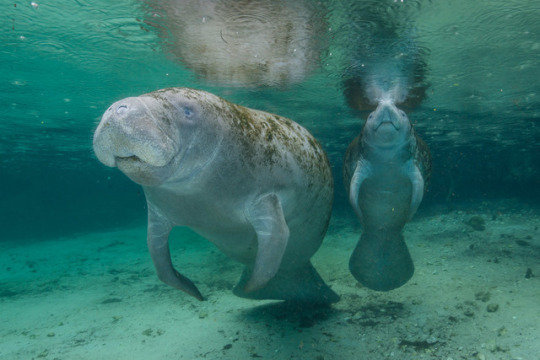
This week’s presentation on Vallisneria was awesome. It really made me think about our local ecosystems beyond just what we see on land. From what Dave Ceilley told us Vallisneria is by far one of the most important staples for aquatic life in Florida waterways. It will help rectify the problems we have been having with cyanobacteria and make our state flourish with tourism again. The only thing is I am not sure how well this will go in the future if we don’t change our ways. Vallisneria is a crucial step in the right direction, yet we continue to flood it with herbicides meant for other plants such as Hydrilla. I guess the question that keeps floating around in my head is: How are we going to keep this plant alive for the health of our marine ecosystems? How do we change to make it possible? Though I do not know the answers to these questions yet, I hope that Lee county and water management in multiple counties is taking these questions into consideration.
I also find it difficult to understand how we may achieve this if it is so vulnerable to changes in salinity as well? We are a hurricane prone state, and with hurricanes often comes storm surge and salt water. How do we prevent the Vallisneria from being wiped out by this?
Aside from my questions on its vulnerability to its environment. I also found it interesting that Dave Ceilley mentioned that they had planted large groups of it and it immediately was overgrazed. It made me think about our aquatic herbivores and how much we have changed their environment. We have helped wipe out this plant in our attempts to rid our waters of invasive or unlikable vegetation but we never once thought about how it may impact them. It does not surprise me one bit that manatees and turtles eat grass being grown quickly. After all, its like putting hay in front of a hungry horse. You cannot expect it to lay untouched.
Pictures:
River Cooter Turtle in Vallisneria: http://www.whughesstudio.com/florida-springs-1
Manatees in Florida Springs: https://blog.nationalgeographic.org/2015/01/30/diving-into-floridas-springs/
0 notes
Photo
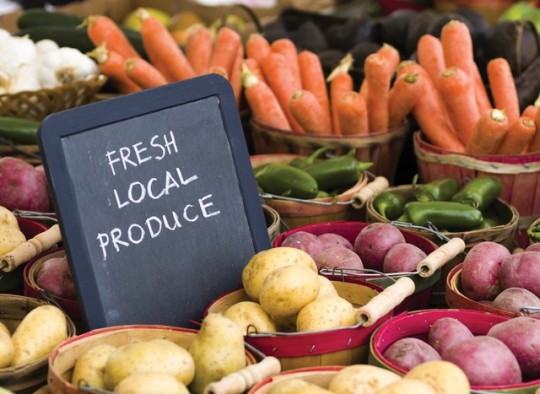

In watching “No Impact Man”, I found a lot of interesting facts and methods. I found it extremely interesting that I never thought about how commercial farming has tweaked the way we eat food as we no longer eat with the seasons. In seeing Colin Beavan and his family eat root vegetables in the winter, it made me wonder why it is that we have made so much more food readily available and why we no longer eat the way that nature intended us to. Especially after Colin says that “the year that we ate locally and it reversed my wife’s pre-diabetic condition”. It made me wonder if some of our ailments come from not eating in a seasonal rotation and not eating natural, wholesome food.
Also the film made me highly aware that there is no possible way that Americans (in the least) would be able to live without electricity. Not only would it be a brutal winter as Colin’s wife was describing on screen but it would also be implausible for places like Florida. After all, I remember my family going eleven days without power during Hurricane Irma and we ended up getting hives from the heat. The segment in which they talked about electricity made me start thinking about alternate means of electricity. If we can’t live without it then the least we can do is make it more environmentally friendly such as solar panels or wind turbines. I truly wish that Florida would install more solar panels given that it is our largest natural resource.
The film also got me thinking about our sense of community and how socially independent we are as individuals. I feel as if a lot of families (mine included) don’t spend enough time together. I think this has a lot to do with electronics as Colin says but I do recognize that there is more to it than that. Though I do think electronics are becoming a barrier between people. I remember going and playing outside as a kid or playing with toys when around family. Now I see more kids with tablets in their hands more than anything else. It makes me sad especially because at their young age they should be enjoying their family time and the use of their creative imagination. I also see more cell phones on restaurant tables than I’d like to admit. More people staring at their phones than at each other. It makes me sad. I feel as if as a society we are digressing from what it truly means to be social and communicate with others. I personally try to practice this whenever I go out with my boyfriend or family. The phone stays in my pocket so we can actually talk.
Pictures:
Fort Myers Farmer’s Market- https://fortmyers.floridaweekly.com/articles/farmers-markets-26/
Root Vegetables- https://balanceblog.bistromd.com/health/healthy-eating/your-ultimate-guide-to-root-vegetables/
0 notes
Photo


In our discussion after watching “No Impact Man”, I was truly surprised how little my peers knew about Lee county and the flourishing agricultural community that thrives here. Maybe it is because I grew up in 4-H but I always have had access to a lot of fresh and local food. What stuck out to me the most is that people think that there is no access to this food beyond their local farmer’s market. Which honestly, only skims the surface as to what is available in our county.
Lee county is teaming with dairy goat farms. There are a ton of individuals who show and breed dairy goats in our county and they are always willing to share their bounty whether it be a kid from their prize goats or the super rich and nutritious milk that they often bottle and put in their freezers especially if they happened to lose kids that season. I personally have indulged in goat’s milk in my coffee and even goat’s milk ice cream (which is delicious by the way). I also have a family friend who makes goat’s milk soap and has taught me how to make it. I will never use a bar of Dial soap again. I just find it odd that people think that they can’t get milk locally. I understand it is not cow’s milk but honestly goat’s milk has so much more to offer nutritionally than cow’s milk and tastes so much better.
As for other means of fresh food, there are so many local butchers. Lawhon’s in North Fort Myers, has the most bargain for your money and there are even places that you can have your own animals processed if you’d like to go that route (which I admit even I’m a bit weary of trying). Not only is meat readily available but so are eggs. Everyday I pass by homes in Buckingham, North Fort Myers, and even Lehigh Acres where fresh eggs are being advertised. All it takes is a phone call and you’d have fresh eggs in hand and you would be able to see that they are so much better than the old eggs we buy in stores and you can see what the people are feeding their chickens.
There are also two farms that I can think of off the top of my head that produce vegetables and fruits year round. Buckingham Farms and 31 Produce have beautiful farms and 31 Produce even allows you to go out and pick your own fruit to take home.
Also there are a few local Bee Farms such as Councell Farms that not only will remove bees for you but also sell tons of local honey. They also are awesome because they will take bees out to local farms to pollinate their crops but that is a separate tangent.
Honestly, I just find it really sad and bewildering that no one seems to know about any of this. I see these advertisements daily as well as the businesses that provide local food. Is it perhaps just that people would rather go to the grocery store than admit that they do have access to local foods? Do they perhaps struggle with the potential of building a community based on food? I myself have social anxiety to a degree but I have gotten past this. Local food has become important to me and my well-being. My only thought then is that maybe they are scared to try new things. I can understand that but saying that there isn’t anything available aside from what is provided at the farmer’s market is a tad ignorant in my opinion.
Pictures:
Alpine Dairy Goats- https://www.goatzz.com/animal.aspx?id=3895878&spid=8&title=alpine-dairy-goat-prize-herd-for-sale
Goat’s Milk Soap- Personal Picture of soap bought from my friend, Penny Beigh
1 note
·
View note
Photo

I had always heard about how growing a single crop in large amounts is bad for our environment and can have negative impacts such as depletion of nutrients from the soil. I had also heard how crop rotation is a great alternative. Yet I hadn’t quite taken into consideration the amount of pesticides that go into keeping these crops healthy and pest-free.
After reading Carson’s point-of-view on pesticides, I have to say that I am truly shocked at how ignorant I have been. I knew chemicals were bad for the environment and have heard murmurs of how industrial farming is bad for the consumer. I just never really looked beyond the surface level of these things. I mean who am I to say that we shouldn’t mass produce food given that it is our current practice?
Yet here I am now questioning our methods. I am questioning why we have put such little research into our chemicals. After all, as Carson stated nature is a culmination of good and bad (29). So why has there been so little research as to perhaps eradicating a single pest, or even easier would be to grow multiple food sources in one area? I really think it boils down to our corrupt sense of money. That the dollar bill is more valuable than life (both human and other natural beings). Just the thought of this makes me upset. How do we change our societal sense of greed? How do we become more sustainable?
Looking at our goals of sustainability through education, equality, and economy, it’s hard to see society moving in the right direction. Especially given a lot of social problems and laws regarding them being passed or argued over at the moment. There is no unity in wanting to become sustainable currently. At least not within the United States. I am not sure how we go forward from this. I wish there was an easy answer. All I know, is that I can try my hardest to make a difference in my own life and those close to me. I will try to make a difference to the best of my ability and make changes that allow for a cleaner environment in my neighborhood. After reading our required text for today, I am going to try and find natural alternatives to chemicals in my personal food production (gardening or getting food from a sustainable location).
0 notes
Photo





I never have really thought about Florida as a haven for gardening and sustainable gardening and farming until our trip to the Food Forest and nature trails on campus. It really enlightened me to the potential of what I could do if I wanted to start gardening or even start my own path of being a naturalist (to some extent).
The walk to the food forest showed me that there are all kinds of natural means of food around us as well as plants that can help with common ailments. I think learning about Spanish Needle was the biggest eye opener. I’ve seen the weed growing in my pasture for most of my life and have always thought of it as a nuisance. Now I know that it has a purpose and can relieve my pain by applying the sap of the leaves to my ant bites. I’ve also seen Coco plums on occasion in my lifetime in Florida and I thought I’ve never once thought of them as a food source. Now I know that they could be if I wanted to try them.
Being in the Food Forest was by far the best part of our field trip. It showed me what Florida is truly capable of. The trees in the Food Forest were huge: so much bigger than other trees I’ve seen. I loved that there were so many different varieties. Though most were not bearing fruit, I can only imagine what the Food Forest looks like in the Fall. I would love to visit it again and gather Mulberries, Limes, Cranberry Hibiscus for tea, and some of the different herbs grown there. It still baffles me that this is a resource we can utilize whenever we want and it’s free.
Also I talked to Hannah after our tour and will be getting a hold of Patty Krupp in the future to try and schedule a tour for a non-profit organization called 4-H. 4-H is a youth development program that focuses on leadership, community service, and agriculture. I think it would be a great opportunity for some of the youth to come out and see the Food Forest and how well it flourishes in Florida. I think it would be a great experience as some of them are interested in Citrus projects and maybe it will give them some insight into what can be attained in terms of sustainability and permaculture.
Pictures in order: Papaya, Mulberry Tree, Pineapple, Coco Plum, and Food Forest Sign
0 notes